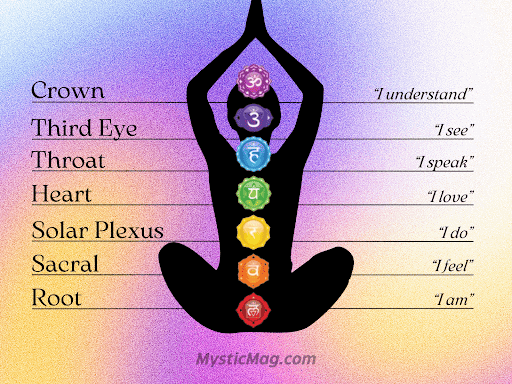
Hypnotizing yourself can be a great tool if you’re hoping to heal, manifest, or gain a sense of peace. But, this is easier said than done when you’re unfamiliar with self-hypnosis techniques or find it challenging to quiet your mind. However, don’t let this trigger self-doubt, as there are practical steps you can follow to induce a powerful hypnotic state.
To help you master the art of self-hypnosis, I’ve put together a straightforward guide to make the process less daunting. That way, you can better use self-hypnosis as a gateway for spiritual exploration and gain a profound sense of self-awareness.
Sometimes no matter how committed you are to inducing self-hypnosis, the process can feel discouraging. That’s where the professional guidance of a hypnosis expert like Marisa Peer can take the pressure off your shoulders. To obtain this knowledge, you can check out her Mindvalley Quest and enjoy the benefits of tailored hypnosis.
Quick Overview: How to Hypnotize Yourself
- Create a Sacred Space: Set the mood for your hypnosis session in a quiet spot where you won’t be disturbed. Check out my favorite ways to set up a sacred space.
- Set Your Intention and Affirmation: Determine what you want to accomplish during your hypnosis session for greater results. Here are some guidelines for setting clear intentions.
- Breathe and Clear Your Mind: Focus on your breath, clear your mind, and journey inwards. Explore some techniques to help center your energy.
- Deepen Your Relaxation: Use the “staircase” or “set the scene” method to dive into a hypnotic state. Discover more about using these hypnosis techniques.
- Visualize Your Intention: Begin to focus on your intention and visualize scenes that correspond with the energy you’re trying to manifest. Here are more tips on this.
- Exit the Hypnotic State: Once you feel you’ve accomplished your goal, you can return to your regular conscious state. Find out how to exit hypnosis.
What Is Self-Hypnosis? The 3 Distinct Stages
Self-hypnosis involves inducing a hypnotic state without the assistance of a hypnotherapist. During self-hypnosis, you’ll enter a deeply relaxed and focused state where your conscious mind becomes more subdued. This allows you to access your subconscious mind to promote personal growth, healing, and positive manifestation.
There are three distinct stages of hypnosis: Inducting, Visualizing, and Exiting. Inducting refers to the amount of time it takes you to fully relax so you can begin to enter a hypnotic state. During this stage, your brain will produce Alpha brainwaves to lower your alertness although you’ll still be quite aware. As you continue to relax further, your brain will begin producing Theta waves so you can enter a full meditative state.
The Visualizing stage involves vivid imagery and is where the most complex work happens during hypnosis. Often times you’ll feel a floating sensation and like you’re disconnecting from your physical body. At this stage, your body is producing Delta waves which induces the deepest type of meditative hypnosis. These brainwaves are the same ones that are created during deep sleep stages like REM.
The Exiting stage is about snapping back into conscious awareness after your hypnosis session. Typically there will be some type of cue to bring you out of hypnosis, like counting down to 1 or a loud finger snap.
To induce self-hypnosis, you can use various techniques, such as visualization, repetition of affirmations, and guided imagery. But, you should remember that if you’re unfamiliar with other wellness techniques like meditation, it may take some time to quiet your thoughts. Mastering this is imperative to enter a deep hypnotic state to yield results.
Step-By-Step Guide: How to Hypnotize Yourself
The biggest reason why many individuals struggle to induce a state of self-hypnosis is because they’re going into it without proper guidance. And while it’s true that it can take some patience to enter hypnosis, having a step-by-step guide can make it easier. I recommend consulting the following guide and staying persistent on the steps you struggle with most.
1. Create a Sacred Space
It’s important to designate an area in your home that will act as your sacred space while you attempt self-hypnosis. It could be the corner of a room, a cozy nook, or even a spare room. Just make sure it’s a place to relax without being easily disturbed. After all, having a serene setup will make it easier to deepen your practice.
Before attempting self-hypnosis, I recommend cleansing the energy of your space. Doing so will ensure no stagnant or negative energy could interfere with your practice. You can cleanse your space by burning sage or incense or creating sound frequencies with Tibetan bowls. Alternatively, you can visualize a white light clearing away negativity.
Additionally, you can dim the lights, burn some candles, and play soothing background music, such as nature sounds. Even placing objects around that hold spiritual meaning, like crystals, sacred symbols, and plants, can help to amplify the sacred energy. Play around with ideas until you feel good about your space, as feeling comfortable is essential.
2. Set Your Intention and Affirmation
While in your sacred place, take some time to reflect on what you’d like to achieve or experience with self-hypnosis. Writing about the areas of your life that you’d like to improve upon, manifest in, or heal can be helpful. For example, your intention may be to reduce stress, ve your self-confidence, overcome fear, or manifest love into your life.
Regardless of intention, you’ll need to develop a positive and concise statement, also known as an affirmation. It must be in the present tense, as this will trick your subconscious into believing it’s already been achieved. For example, if you intend to reduce stress, your affirmation could be, “I’m calm, relaxed, and at ease in all situations.”
Affirmations allow your subconscious mind to focus on a precise target, increasing your likelihood of success. You want the statement to evoke a strong emotional response since the affirmation needs to be energetically charged. So instead of, “I want to overcome my fear,” say, “I courageously embrace new experiences and release all fear.”
You should also note that you can unblock, activate, and strengthen a specific chakra by switching your prefix. Working with the chakras can amplify your intentions and make your self-hypnosis practice more tailored and effective. For example, if you have difficulty expressing yourself, you may want to use a throat chakra prefix for your affirmation. 
3. Breathe and Clear Your Mind
Now that you have your intention and affirmation formulated, you’ll need to relax completely. To do so, focus on the top of your head and gradually move down, releasing tension from each part of your body. For better results, you can tense and then release each muscle group or visualize a wave of relaxation washing over your body.
Once your body is relaxed, you must tackle clearing your mind. Take slow, deep breaths through your nose, allowing your abdomen to expand fully. Then, exhale slowly through your mouth, releasing tension or stress with each breath. Shift your attention to your breath, specifically to the sensation of the breath entering and leaving your body.
As thoughts or distractions arise, acknowledge them without judgment and gently let them go with each exhalation. Imagine that each breath out clears your mind, creating space for stillness and focus. If thoughts persist, you can visualize them being carried away on a gentle breeze or floating downstream, away from your awareness.
4. Deepen Your Relaxation
Next, you’ll need to actualize your self-hypnosis by entering into even deeper states of relaxation. You can do so with two distinct methods, the “staircase” or the “setting the scene” methods. It may be helpful to test each method to see which resonates with you most, as one may be more successful at putting you into a state of hypnosis than the other.
| The “Staircase Method” | The “Setting the Scene” Method |
| Visualize a staircase in your mind’s eye, with each step leading you deeper into relaxation and hypnosis. | Create a mental image of a soothing and tranquil environment that aligns with your intentions for self-hypnosis. |
| Imagine the details of the staircase: the material, color, and embellishments. | Visualize the details of this scene, including the location, colors, natural elements, and any specific features that evoke relaxation and peace. |
| With each step, count down from a chosen number, such as 10, and imagine yourself descending deeper into a relaxed state. | Engage your senses by incorporating sounds, scents, and textures into your mental image. For example, imagine the sound of gentle waves, the smell of flowers, or the softness of grass beneath your feet. |
| As you descend, visualize yourself becoming more relaxed, calm, and open to suggestions. | Immerse yourself in the scene, imagining you’re fully present and experiencing it in vivid detail. |
| Once you reach the bottom of the staircase, imagine yourself entering a serene and peaceful space where you can practice self-hypnosis. | As you enter this scene mentally, feel the calmness and serenity wash over you, allowing it to deepen your state of relaxation and openness to hypnosis. |
5. Visualize Your Intention
As you stand in the environment you visualized, bring your intention to the forefront of your mind. Create a mental image of yourself living your intention as if it’s already been achieved. See the images, hear the sounds, feel the sensations, and immerse yourself in the experience. The more you make it real and detailed, the more you’ll feel the emotions.
While you visualize your intention, generate and amplify positive emotions associated with achieving your desired outcome. Feel the joy, gratitude, confidence, or any other positive emotions that align with your intention. This emotional engagement enhances the effectiveness of the hypnosis and allows for greater manifesting power.
Stay focused on the visualization and intention as you repeat the affirmation you set to match. Let go of doubts, worries, or distractions, and firmly believe your intention is achievable. Trust in the power of your mind and the effectiveness of self-hypnosis to manifest your desired outcome.
6. Exit the Hypnotic State
Before starting your self-hypnosis, you should establish an exit cue or a specific phrase that you’ll use to signal the end of the session. You can tell yourself, “I will count from one to five, and when I reach five, I will be fully awake and alert.” If you enter into an intense hypnosis, it may be best to set an alarm to snap you back into reality.
Alternatively, you may fall asleep, which is another way to exit hypnosis. While this can be great for further exploration in the dream realm, it may affect your ability to remember the details of your session. But, ensure you do what feels best for you, as establishing your practice can take some trial and error.
Once you return to your normal state of consciousness, take a moment to stretch your body gently and move around. You can also reflect on your experience and ground in the present moment by journaling about your session. Always express gratitude for the experience and thank your spirit guides for leading you through the session.
Tips to Improve Your Self-Hypnosis Practice
In case you’re having difficulty inducing self-hypnosis or aren’t getting the results you hoped for, consider the following tips.
- Stick to a Schedule: The truth is that practice makes perfect and there’s no exception when attempting to master self-hypnosis. Making a commitment to a schedule where you can practice your self-hypnosis can take your experiences to the next level. Learning to relax takes time, especially if you’re in the process of rebalancing your nervous system.
- Set a Daily Intention: Intentions are powerful and they can serve a function even before you start your hypnosis. At the beginning of each day, set the intention to enter into deeper levels of relaxation throughout the day. That way, by the time it’s time to do your self-hypnosis you’ll be in a relaxed state before any techniques.
- Notice Your Triggers: Self-hypnosis can bring up unresolved emotions and traumas that aren’t always pleasant to witness. Your fear of negative memories or emotions could be blocking you from doing the work that’s needed to see results. Take some time to reflect on any triggers you can anticipate so they feel like less of a shock.
- Be Patient: It’s normal to want to see immediate results with self-hypnosis or even feel like you’re doing something wrong. Sometimes, it has nothing to do with your technique and more to do with your own personal journey. Give yourself some grace for going out of your comfort zone and for trying something vulnerable. Having patience can work wonders and could be what’s preventing a breakthrough.
- Try Guided Self-Hypnosis: Getting the guidance of a credible professional can accelerate the results of your self-hypnosis. A guided practice can help you relax further into your practice and tailor your results since you have someone else guiding the way. The guiding hand of an expert can help you see any blind spots you may have and pin point the techniques you should focus on as a beginner.
The Best Way to Induce Self-Hypnosis
Self-hypnosis is considered a safe practice that can get pretty intense. Knowing what to target during your sessions isn’t easy either, and even then, you risk uprooting deeply ingrained traumas and emotions. If you’re struggling with hypnosis, you can safely induce yourself by participating in Mindvalley’s “Rapid Transformational Hypnotherapy” Quest.
This Mindvalley Quest is led by the world-renowned hypnotherapist Marisa Peer and spans 35 days. It takes a personalized approach to learning hypnotherapy fundamentals, which helps improve your mindset, health, and relationships. You’ll also unlock the secrets of your subconscious mind and transform it.
The best part is that Mindvalley allows you to follow along with a class or take the Quest at your own pace. You’ll appreciate that the quest is structured in a way that isn’t overly complicated or overwhelming for beginners and, instead, will offer you a solid roadmap for success with self-hypnosis.
I recommend this Quest because Mindvalley’s cutting-edge curriculums, world-class teachers, and vibrant communities have helped me become a better person. Since hypnotherapy sessions with credible practitioners aren’t cheap, the Quest saves you a fair bit of money. Even if you’re on the fence, you can test it with its 15-day trial.
FAQs on Self Hypnosis
What are the benefits of self-hypnosis?
Some benefits include a reduction in anxiety, pain, tension, dyspepsia, and irritable bowl syndrome. The benefits of self-hypnosis have been clinically studied and several different studies have concluded that it had a positive effect on the symptoms listed above. So, if you deal with any of those symptoms, practicing self-hypnosis can alleviate discomfort but you should consider seeking professional guidance for the best results.
Can self-hypnosis be dangerous?
Self-hypnosis is generally considered safe when practiced responsibly and with proper guidance. However, it’s important to approach self-hypnosis cautiously and be aware of potential risks. You should never attempt self-hypnosis while operating a motor vehicle since it can lead you to lose focus and cause a possible accident.
Since self-hypnosis can bring up intense emotions, working with a trained professional can be helpful. Additionally, if you have a history of mental health conditions, I recommend chatting with a medical professional to rule out any possible risks. Above all else, educating yourself on best practices for a pleasant experience is always helpful.
Is it possible to use self-hypnosis to cure addiction?
Yes, many individuals struggling with a wide range of addictions have reported positive results from incorporating self-hypnosis. It definitely can act as a complementary tool in the journey toward overcoming addiction, but it is important to approach it with realistic expectations and in conjunction with a comprehensive treatment plan.
For best results, follow a structured self-hypnosis guide and stay open to further professional guidance. While self-hypnosis can aid in addressing your addictions, remember that it requires consistency. Don’t give up if you don’t see immediate results, and make sure you’re consulting additional support along your recovery journey.
Bottom Line
Incorporating self-hypnosis into your spiritual practice can bring radical change into your life. But it’s not always easy to navigate your self-hypnosis journey when unsure about the best techniques. That’s when consulting a trustworthy source with practical advice can bring peace of mind and an effective strategy for manifesting self-hypnosis.
While consulting a guide can be helpful, it’s sometimes not enough to get desired results. To discover the most effective way to hypnotize yourself, I recommend getting first-hand insights from hypnotherapist expert Marisa Peel. Her hypnotherapy Quest on Mindvalley guides you through hypnotherapy fundamentals from the comfort of your sacred space.



